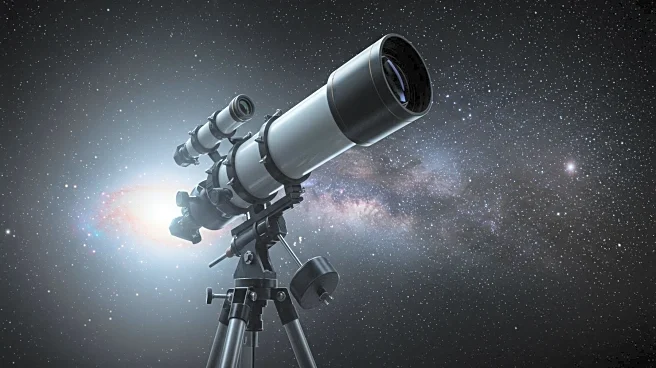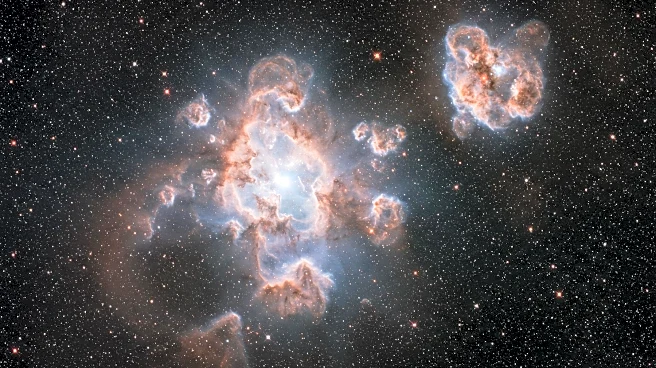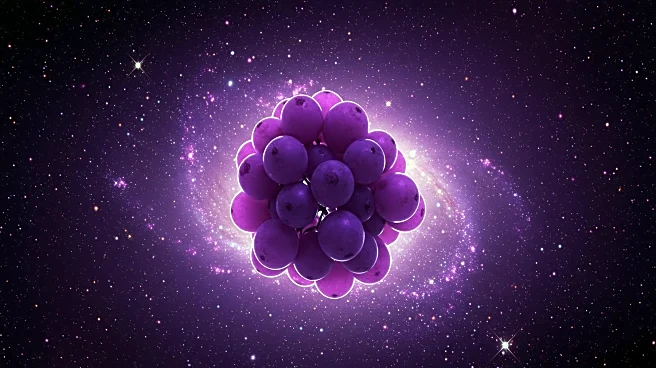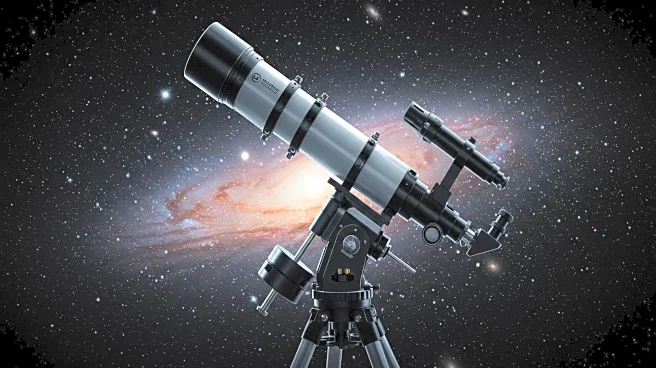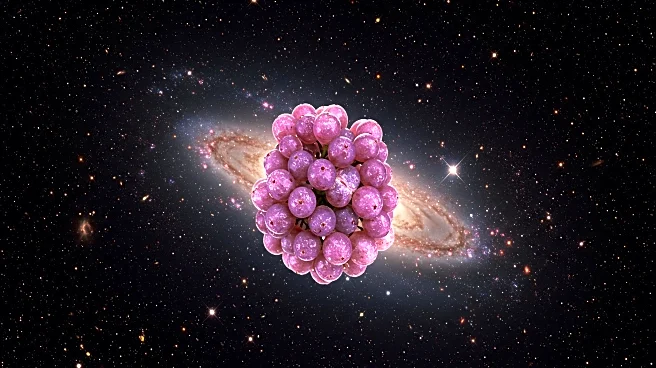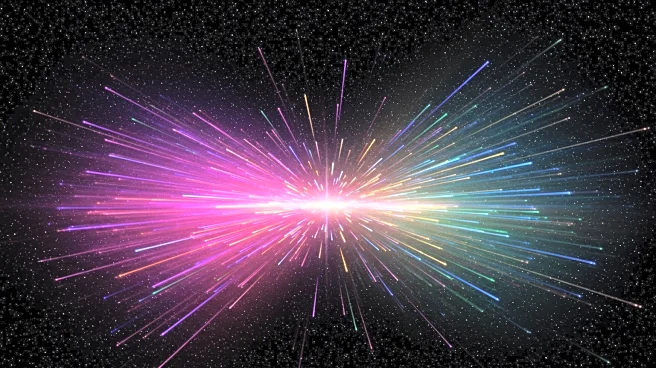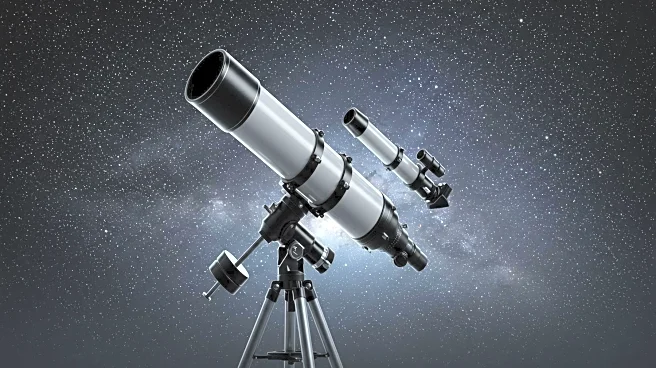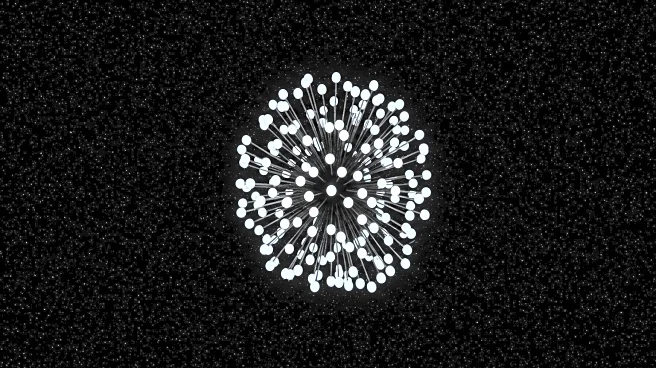What's Happening?
The James Webb Space Telescope has discovered over a dozen galaxies in the early universe that have paused their star formation, a phenomenon that challenges existing theories of galactic evolution. These 'dormant' galaxies were identified using the telescope's advanced spectroscopic capabilities, which allow astronomers to observe light redshifted to near-infrared wavelengths. The discovery suggests that these galaxies entered a quiet phase much earlier than previously thought, possibly due to the influence of supermassive black holes or interactions with larger neighboring galaxies. These factors might heat or deplete the cold gas necessary for star formation, causing the galaxies to halt their development.
Why It's Important?
This discovery has significant implications for our understanding of the universe's early stages, challenging existing assumptions about galactic evolution. The findings suggest that the processes governing star formation are more complex than previously thought, highlighting the role of supermassive black holes and external forces in halting star formation. As astronomers continue to study these dormant galaxies, new revelations are likely to emerge, shedding light on the intricate dance of cosmic evolution. The research underscores the importance of the James Webb Space Telescope in revolutionizing our understanding of the universe.
What's Next?
Future JWST programs aim to further explore these dormant galaxies to better understand galactic evolution. An upcoming program, 'Sleeping Beauties,' will help astronomers estimate the duration of a galaxy's quiet phase and gain insights into the bursty star formation process. These observations could provide further clarity on the complex processes that govern star formation and the lifecycle of galaxies, potentially reshaping our understanding of how galaxies develop and interact with their environments.
